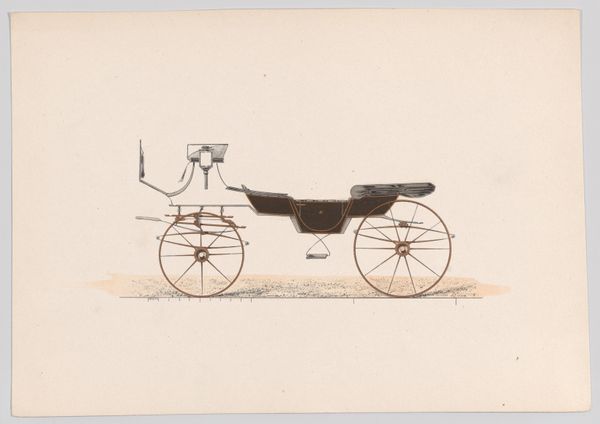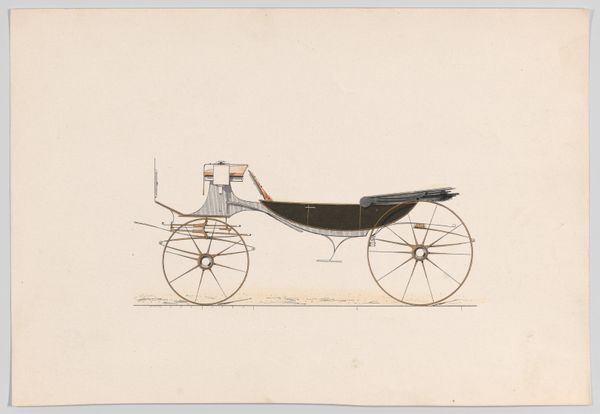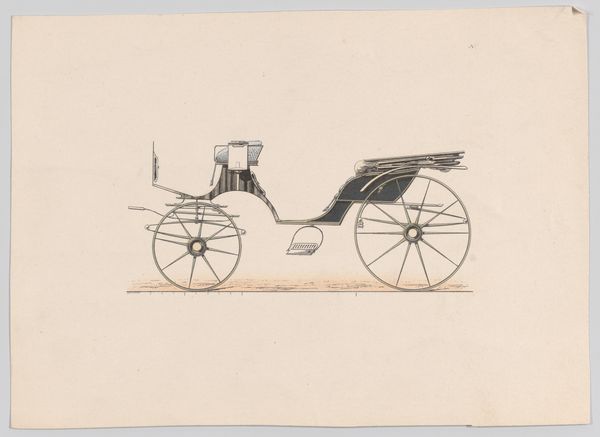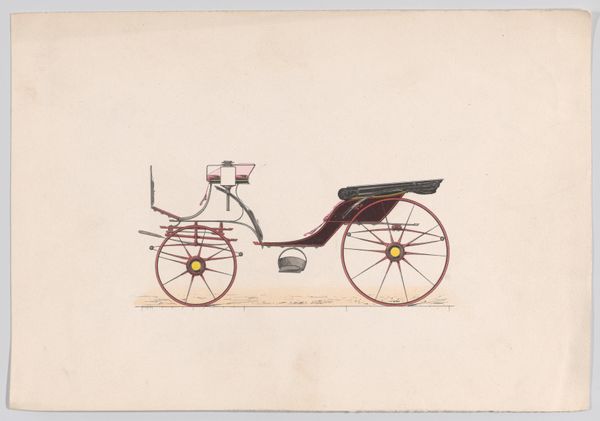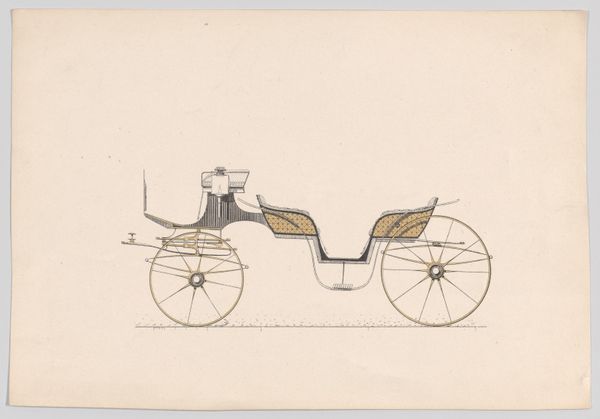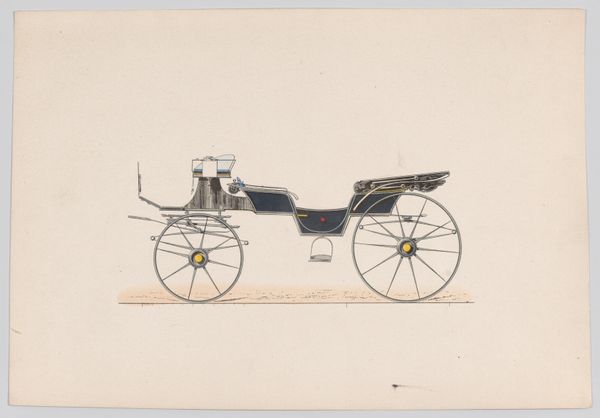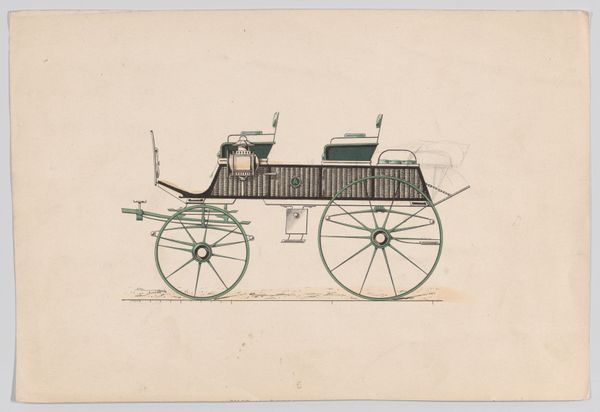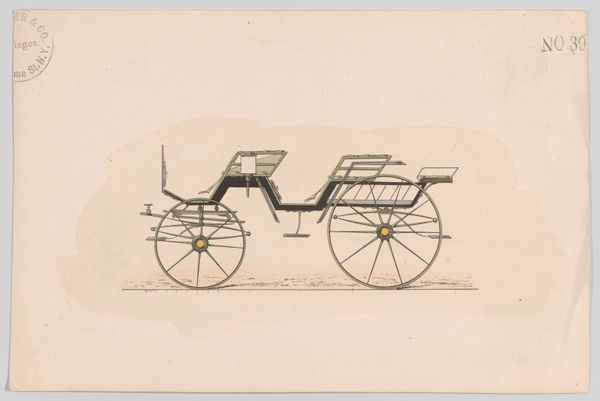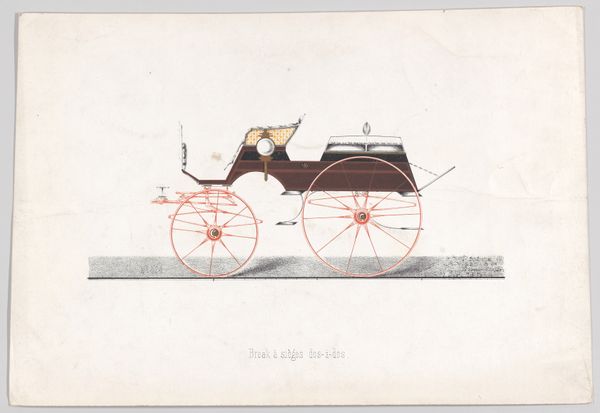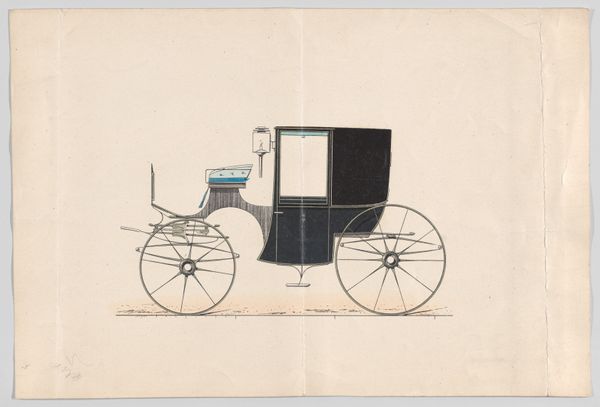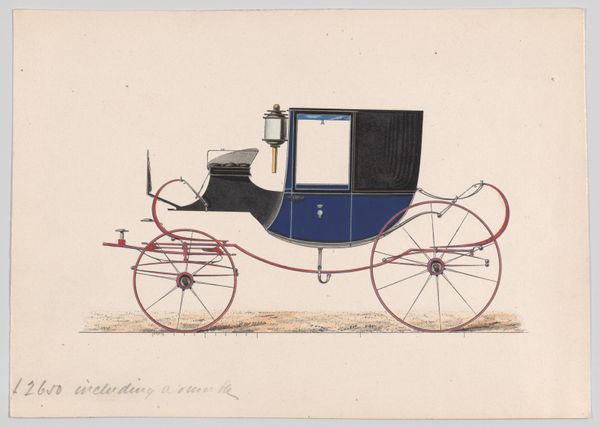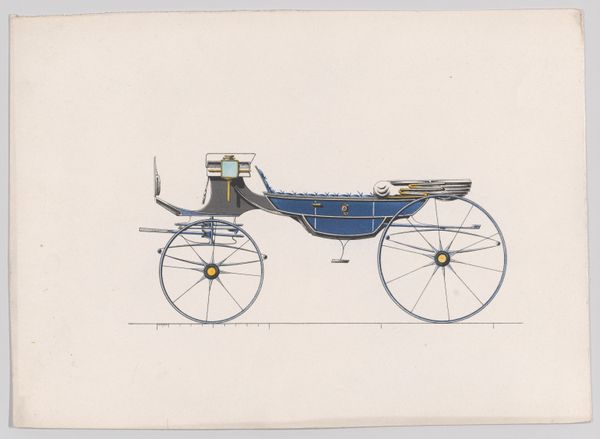
drawing, print, watercolor
#
drawing
# print
#
watercolor
#
geometric
#
watercolour illustration
#
genre-painting
#
academic-art
#
watercolor
Dimensions: sheet: 6 1/8 x 8 15/16 in. (15.6 x 22.7 cm)
Copyright: Public Domain
Editor: This is "Design for Vis-A-Vis Cabriolet Carriage," made sometime between 1865 and 1875, and we don't know who made it. It's a watercolor and print drawing. It feels almost like a technical illustration, but something about the solitary carriage against that creamy background feels… wistful? How do you interpret this work? Curator: It’s a ghost of luxury, isn't it? Think of the vis-à-vis design itself – a face-to-face arrangement intended for conversation, for connection. Here, though, it's isolated. The emptiness, rendered in delicate watercolor, speaks volumes about fleeting status. Carriages, then, were potent symbols of social standing. Editor: So the carriage itself becomes a symbol? Curator: Precisely. It embodies aspiration, a specific class identity, a moment in time. The careful rendering, the precision of the drawing, highlights the object's value, its cultural weight. It asks: what remains when the people are gone? What stories do our symbols carry when their context fades? Editor: It’s like an artifact holding onto an echo. Is that something the artist intended? Curator: Perhaps not consciously. But as an iconographer, I look at this carriage, at its meticulously drawn wheels and shadowed surfaces and see the yearning for permanence, the attempt to capture something essentially transient. The black form against the neutral space reads almost like mourning. Editor: It's fascinating to think of it carrying so much cultural information in a single image. Curator: And it reminds us that every image, no matter how seemingly simple, is embedded within a network of cultural memory, waiting for us to decipher its silent language. This carriage is far more than a vehicle.
Comments
No comments
Be the first to comment and join the conversation on the ultimate creative platform.
